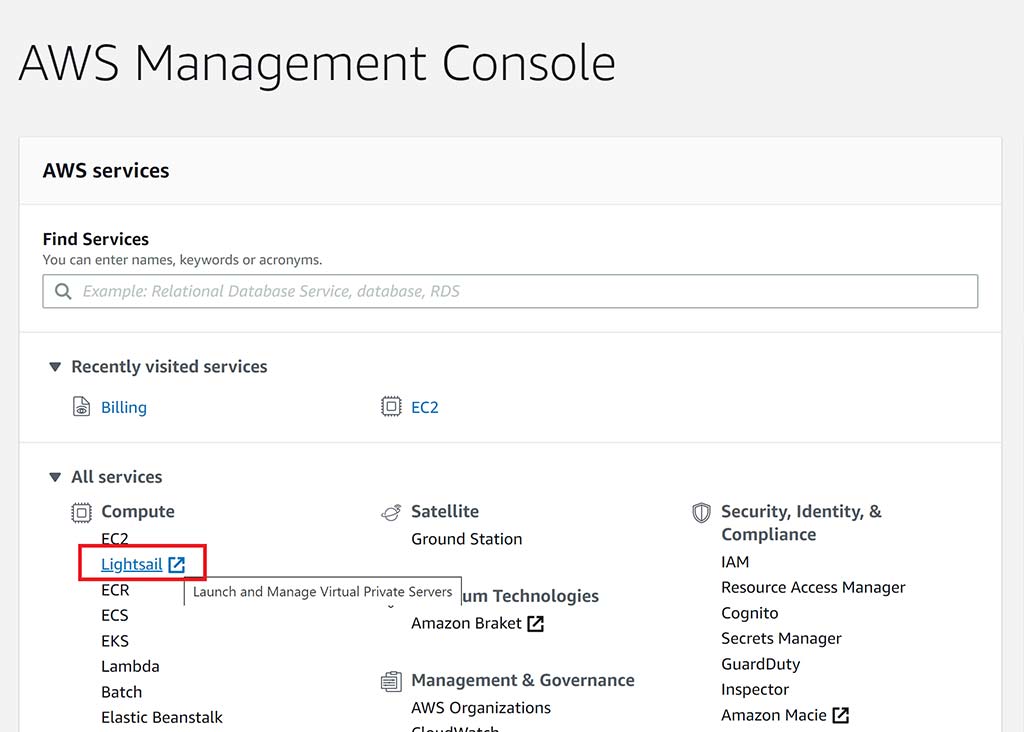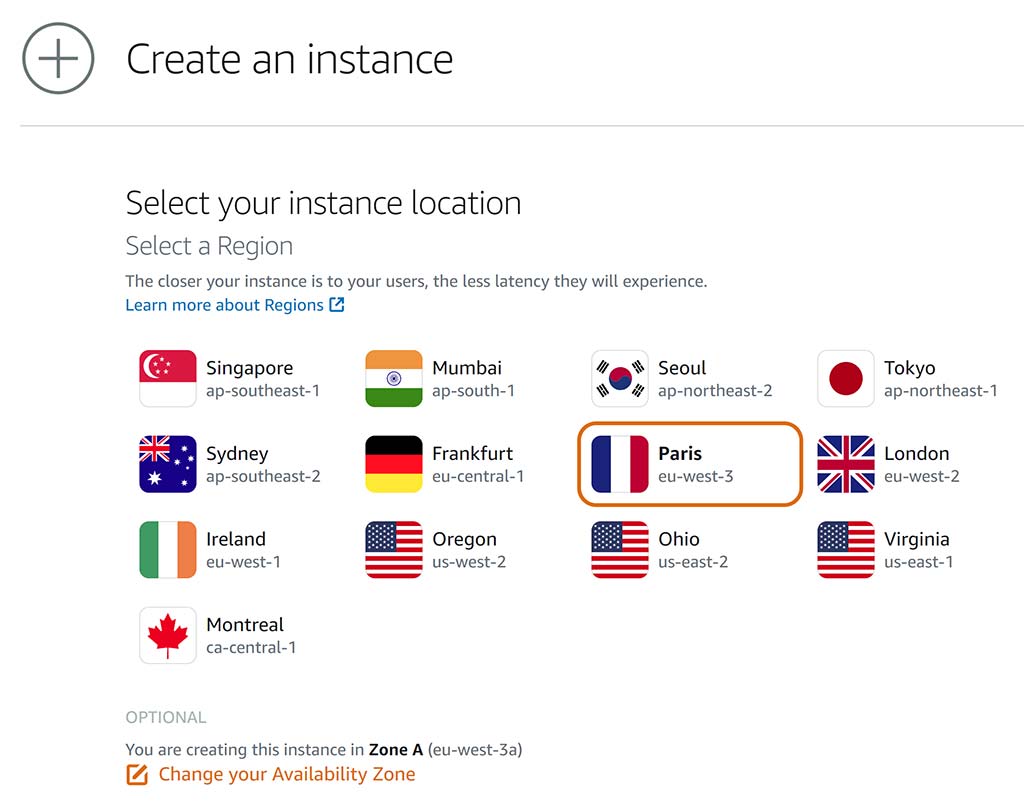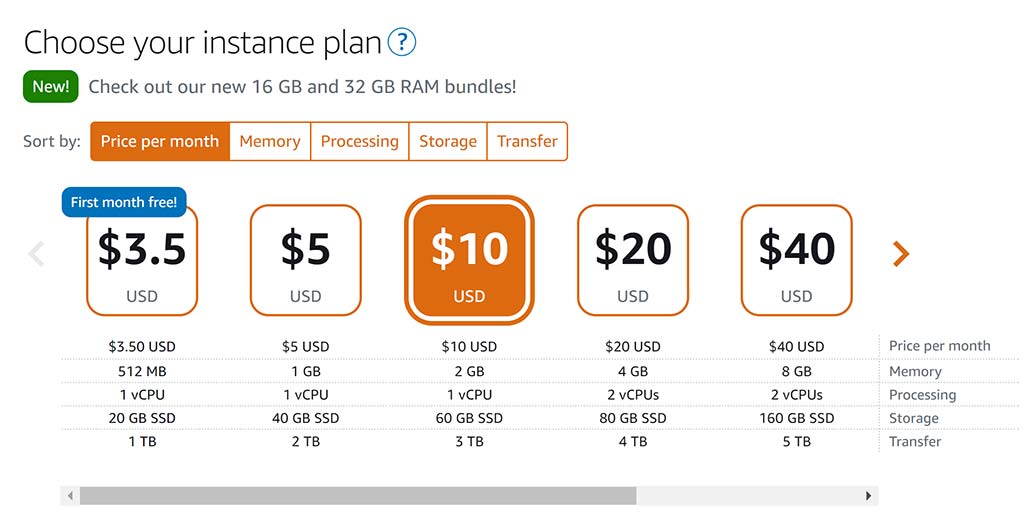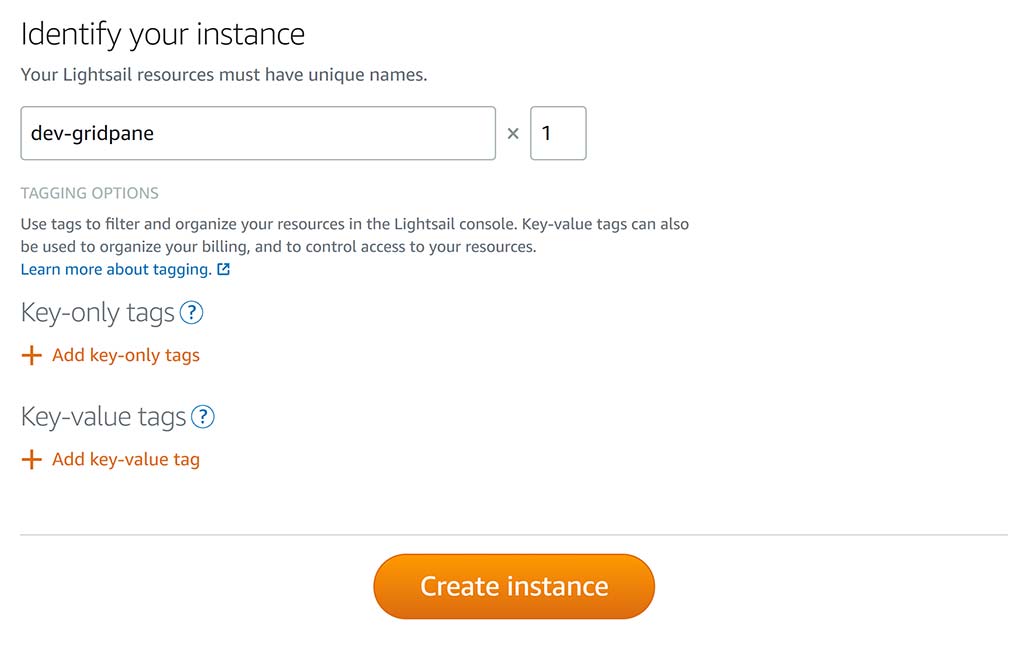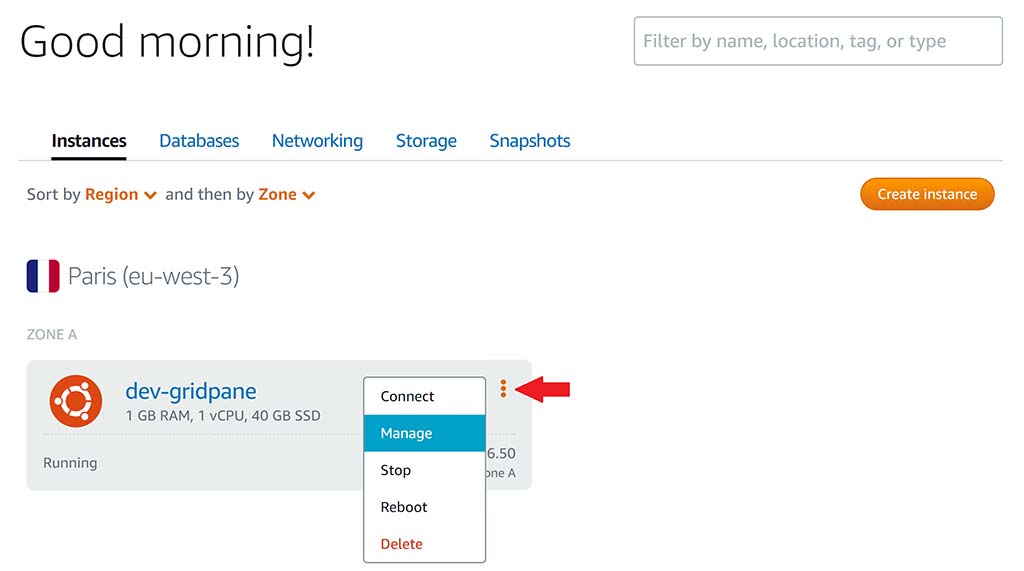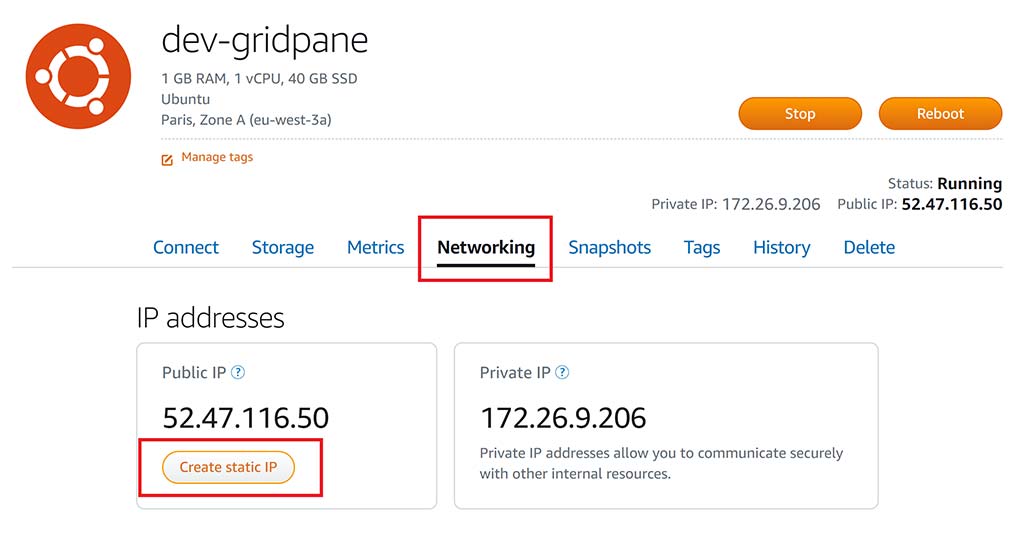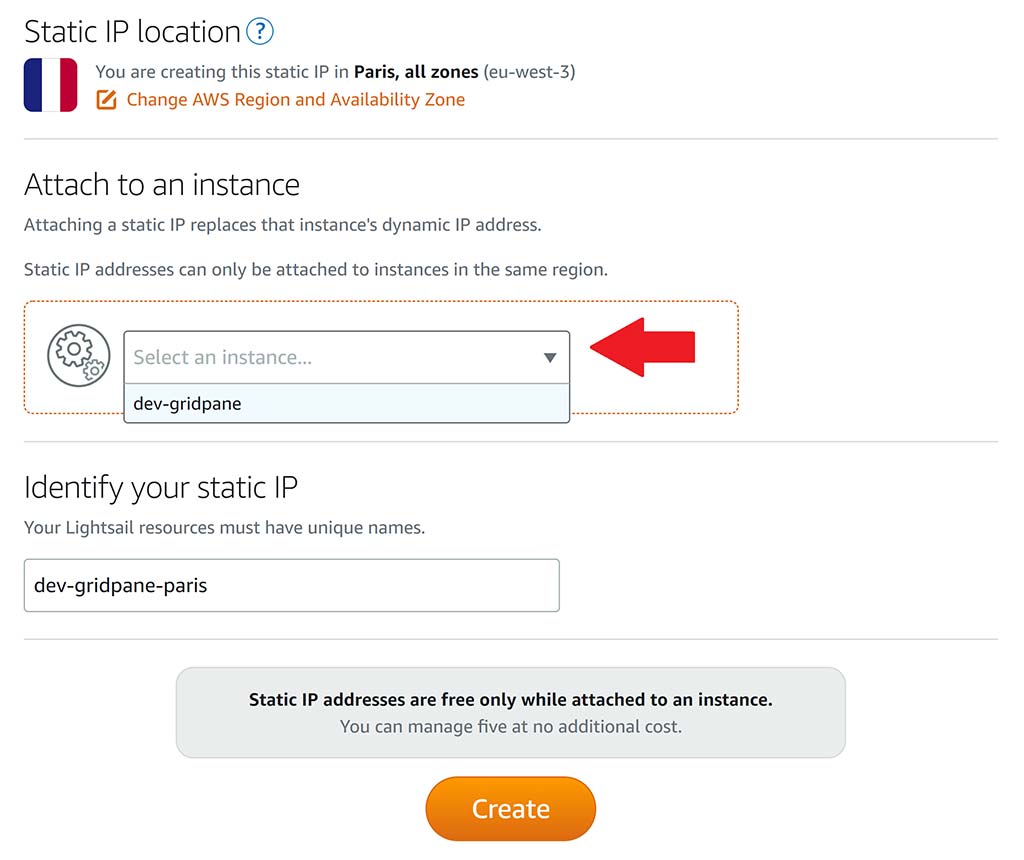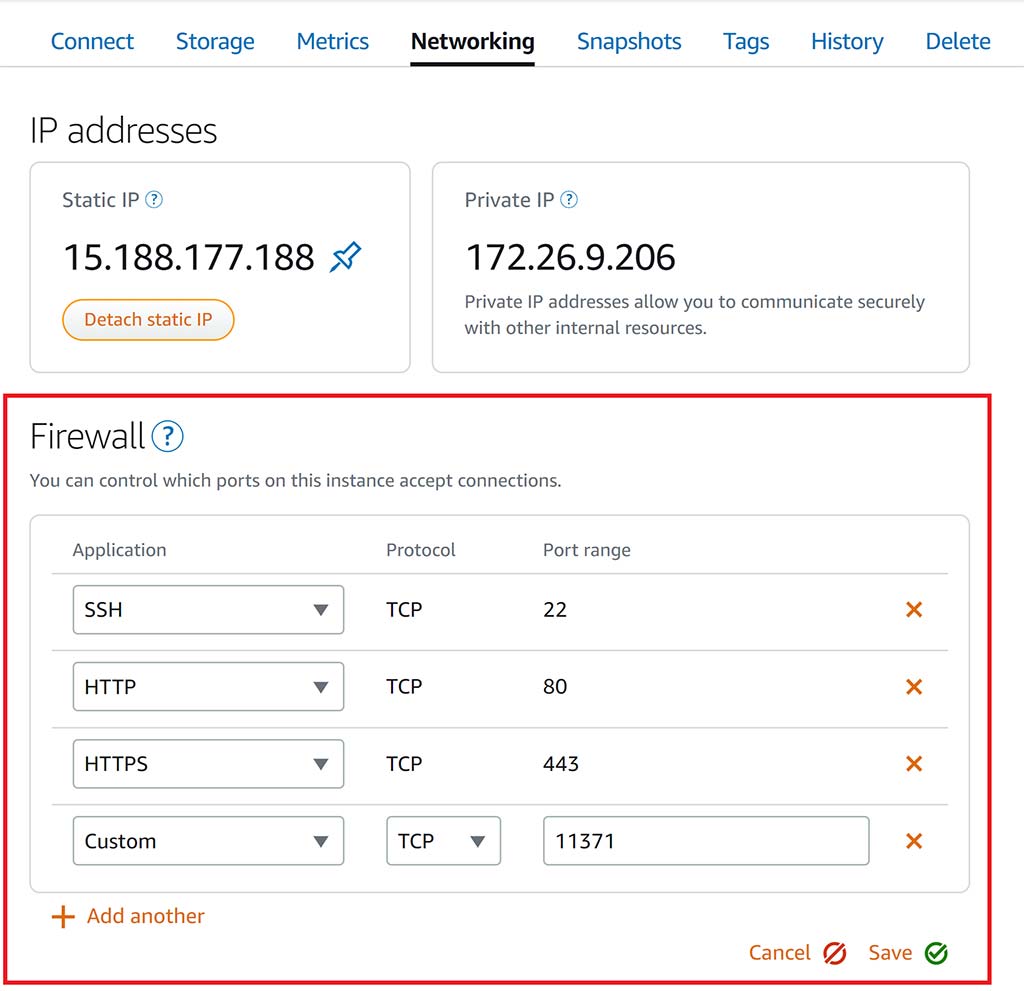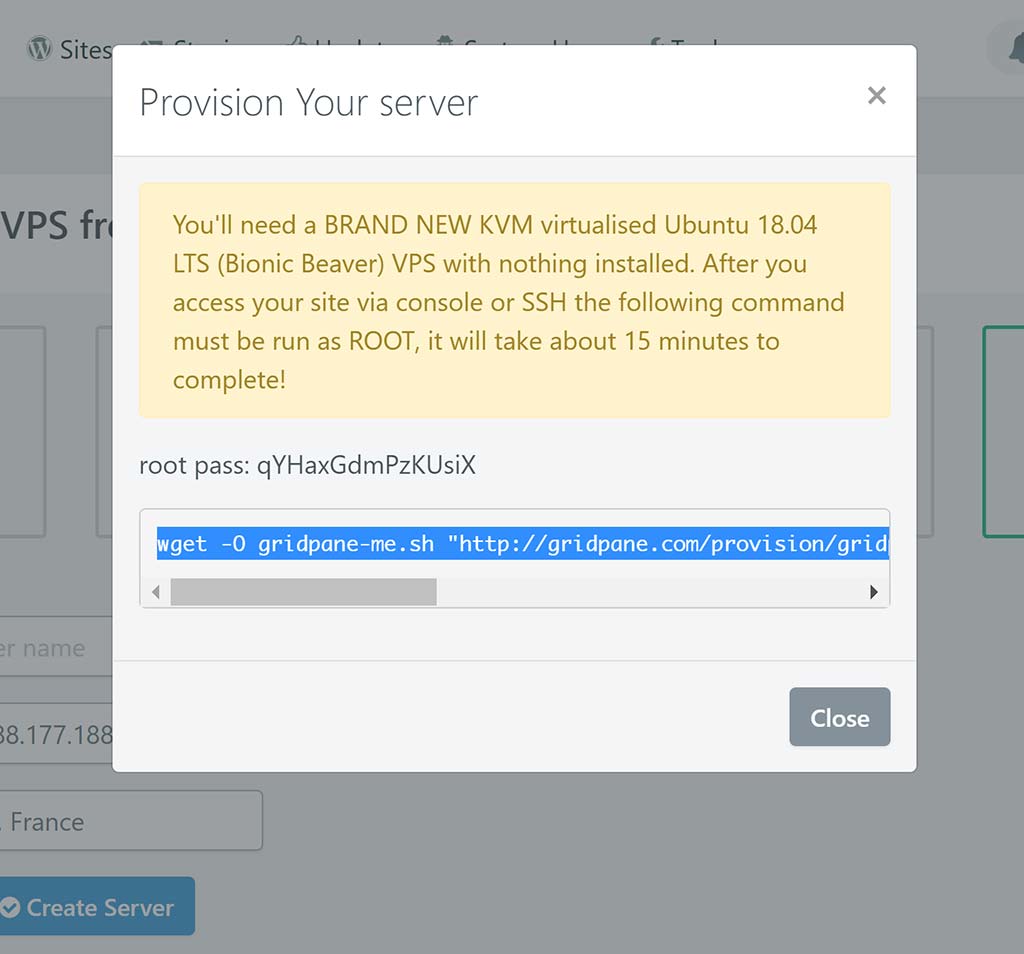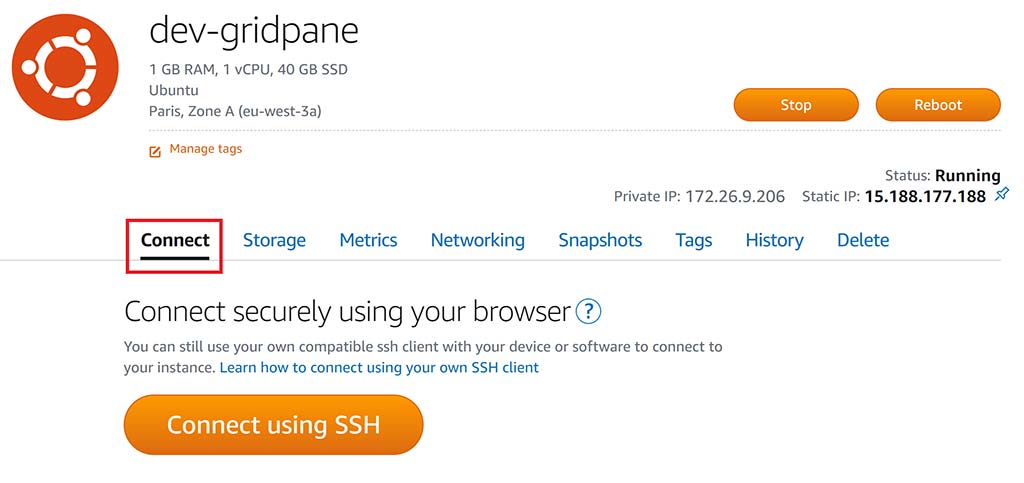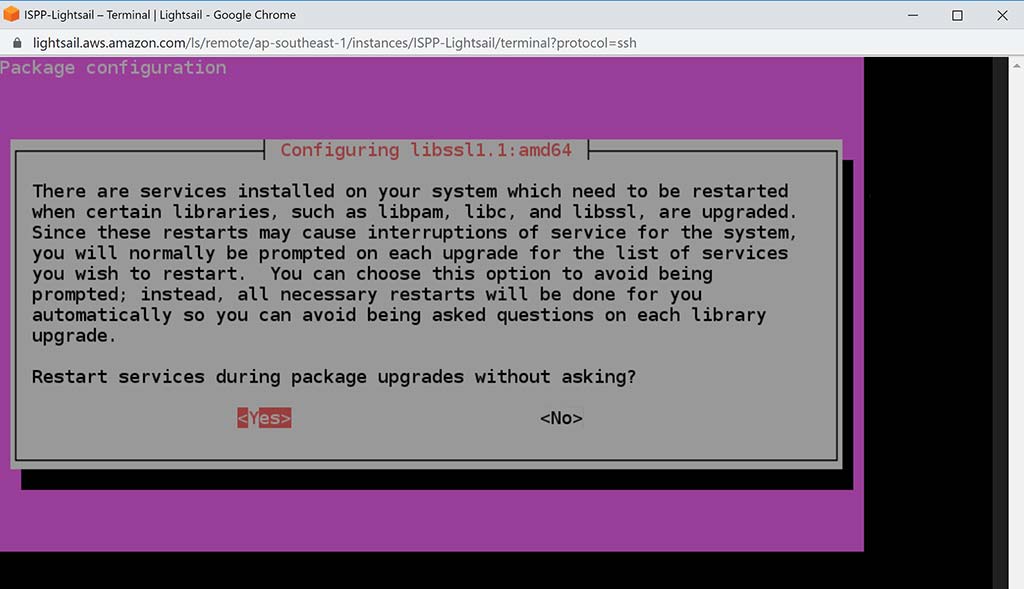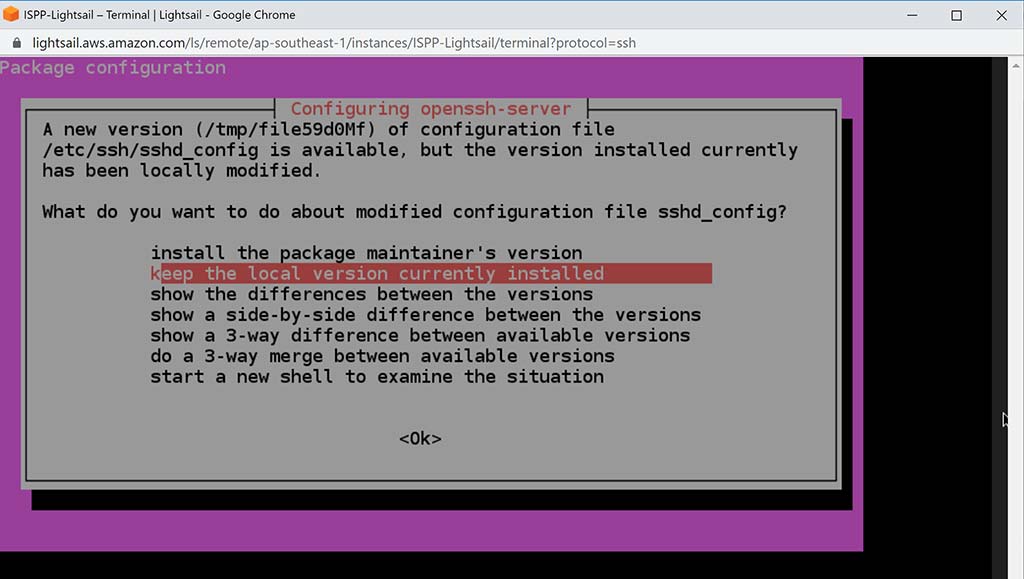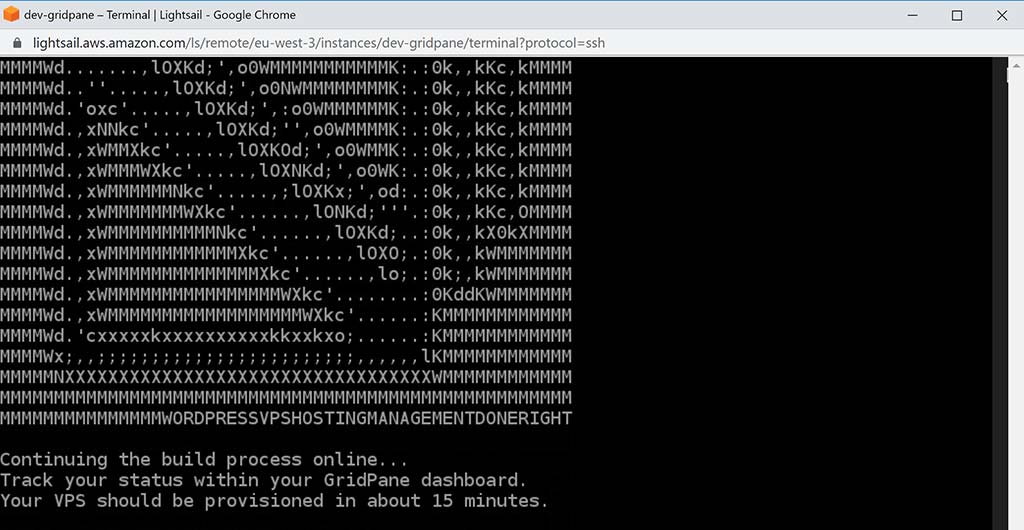Troubleshooting: Custom Server Won’t Provision and is Stuck at 10%.
Information
This article was published before our API integration with AWS Lightsail. You can learn about provisioning a server via API in this article:
Provision an Amazon Lightsail server using the AWS Lightsail API
Introduction
In this article we’re going to provision an Amazon Lightsail VPS and then install GridPane from the command line. If you run into trouble at any time, drop us a ticket in chat and we’ll be happy to help you through it.
Throughout this tutorial we’ll use “VPS” and “Instance” interchangeably.
Table of Contents
Important
- GridPane requires a BRAND NEW KVM virtualized VPS or bare metal server with only standard Ubuntu 22.04 LTS (recommended) or 20.04 LTS image installed.
- Once initial provisioning is complete at the provider, log in to your server via console or SSH and run our provisioning command as ROOT.
- Please do not use servers with less than 1GB of RAM as these cannot be supported and don't offer adequate resources for both the server stack and your websites.
- Please do not use servers that have less than 30GB disk space.
- GridPane does not support ARM servers.
Lightsail and Static IP Addresses
IMPORTANT: Amazon Lightsail only supports a limited number of static IP addresses by default.
This means that if you create more than 5 servers at a time, number 6 onwards may not be assigned a static IP address, and this has the potential to cause some serious problems for these servers.
If your Lightsail server does not have a static IP, then when this server restarts for the first time, it may be assigned a completely new IP address. This will disconnect your server from GridPane, but more importantly, any websites that are on this server will cease to be accessible because the DNS records will now be pointing to the wrong IP address.
The limitations aren’t exactly clear, but please keep this if you’re creating multiple Lightsail servers at the same time. You can learn more directly from AWS here:
Step 1. Create Your Lightsail VPS Instance
Lightsail can be located in the “Compute” service list as shown below
Inside the Lightsail page, click the orange “Create instance” button.
All of the following screenshots for this step are now from the same page, in the order that Amazon has laid the options out. Simply follow along as below.
First, select your datacentre location (and availability zone if you wish). Choosing a location closest to most of your end users is generally best. For this example, we’ve chosen Paris, France.
Next, we need to select the “Instance Image”. For GridPane Prometheus, you’ll need to select: –
- Linux/Unix
- OS Only
- Ubuntu 22.04 LTS (recommended) or Ubuntu 20.04 LTS
Next up you can ignore the “Add Launch Script” and “Change SSH Key Pair” options, but we highly recommend enabling “Automatic Snapshots” (aka server backups).
As we’ve chosen Paris, France as our server location for this example, we’ve chosen to set snapshot times at 3 AM Central European time. This means server snapshots (backups) will take place at 3 AM France time. As most website updates/changes on this server will likely be done during regular daytime/evening hours, this seems like a good time.
You may wish to set a specific time that makes sense for you.
Next, select your instance size.
(Note: While the $5 option will work with GridPane, we recommend at least 2GB of RAM.)
And finally, we’re going to give our new instance a name, and then click the “Create Instance” button. We’re calling this server “dev-gridpane”, but you should choose a name that makes sense for you.
Step 2. Setup a Static IP
Now that we’ve created our instance, we need to give it a Static IP. This is VERY IMPORTANT as GridPane cannot manage your server without having a Static IP Address to reference.
On the Lightsail homepage in your account, click on the three dots in the right-hand corner of your instance and select “Manage” from the dropdown.
Now select the “Networking” tab and click the “Create Static IP” button.
Ensure the region is correct and select your instance from the dropdown menu. Give the IP a unique name and click “Create”.
You have now set up a Static IP address for your VPS.
Step 3. Setup Firewall Rules
Navigate back to your instance “Networking” tab like in step 3.
Here we now need to set up 2 extra firewall rules. We need to set HTTPS, and then a custom rule.
HTTPS will automatically set the port range to 443 once selected.
For the custom rule, set the port to 11371.
This custom Firewall rule will allow all incoming traffic from any IP address to your server’s TCP port 11371. GridPane’s security will lock down and protect this port from any traffic originating from any location other than GridPane, directly on the instance via UFW.
Your rules should look the same as below. Now click save.
We’ve now completed the necessary setup and are ready to connect the VPS to GridPane.
Step 4. Connect Your Server to GridPane
Back in your GridPane dashboard, navigate to the Servers page and click on Custom VPS:
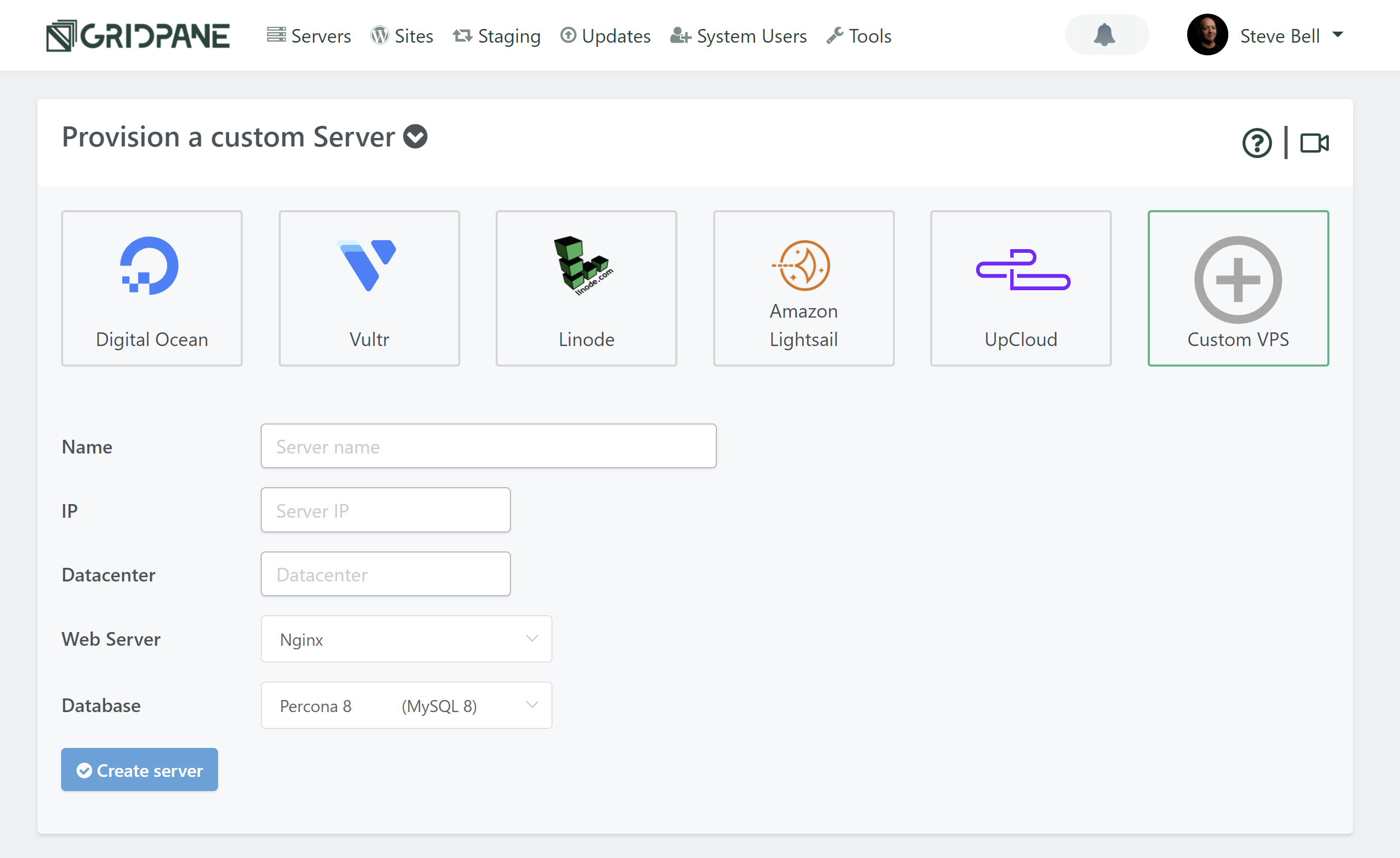
Configure Your Server
Enter the name, IP (the external Static IP Address we set in step 3), and the Datacenter name you wish to use.
Note: The Datacenter name is for your reference only, so feel free to give it a name that makes the most sense for you. As this example’s server is in Paris, France, we’ll go ahead and enter this.
OS Version
We recommend that you choose Ubuntu 22.04 LTS as the default OS.
Choose Your Web Server
You have the option to choose between Nginx and OpenLiteSpeed. This is largely personal preference. If you’re unsure which one to choose, start with Nginx.
Choose your database
If you’re on the developer plan you’ll have the option to choose between Percona and MariaDB for your database.
Percona is a drop-in replacement for MySQL and includes security, availability, and availability features that are only available in enterprise MySQL. It has removed query caching, and it has more advanced aspects for things like storing and managing JSON as a storage format.
MariaDB could mean fewer issues importing old WordPress websites from low-quality hosting environments. It will likely use less RAM than Percona and may offer performance benefits for some websites.
Both are excellent options.
Provider backups
We highly recommend that you enable provider backups. It’s a small price to pay for the extra insurance they offer.
Additional note: You will need to set this up directly at your server provider when using our custom server option.
Create your server
Click the Create Server button when you are happy with your configuration choices.
Step 5. Run the Provision Command
Now back in Lightsail in the “Connect” tab, we can log into the new server by clicking the big orange “Connect using SSH” button.
Type the following command to allow for root level commands to be run:
sudo -s
We’re now ready to enter the string copied from the popup modal to install GridPane:
This will initiate Stage 1 of installation.
There are now two configuration notices that will appear as GridPane begins to install. For window 1 select yes:
For window 2 simply press enter:
A few moments later when the message below displays, we’re all done, and you can exit this window.
Approximately 15 minutes later, your new server will be complete, available on the GridPane dashboard, and ready to build WordPress sites.
Congratulations! Next Steps
Now that your server is live, you’re ready to start creating and configuring new WordPress websites.
To deploy a site click on the Sites link in the GridPane main menu to begin the process. We have a separate article that details the steps in detail for you.


